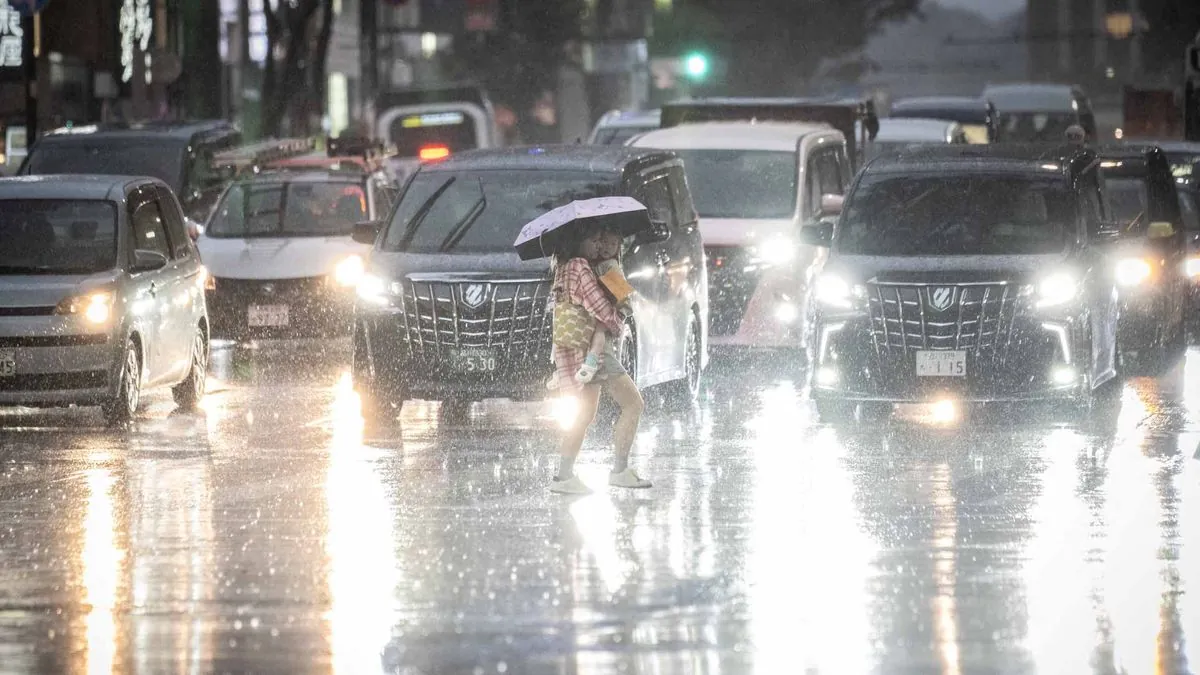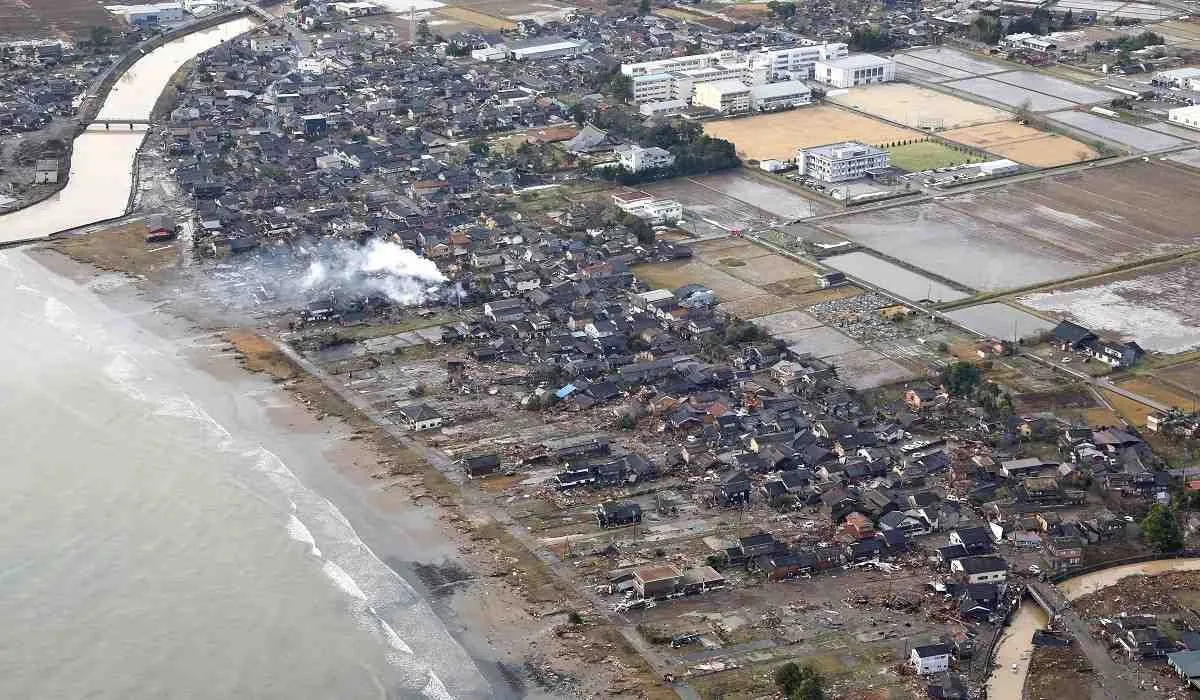Record Rainfall Hits Earthquake-Stricken Noto Region in Japan
Central Japan's Noto region, still recovering from a January earthquake, faces severe flooding due to record rainfall. Evacuation orders issued as two people go missing in Wajima city.

On September 21, 2024, the Noto region in central Japan experienced unprecedented rainfall, causing significant disruption to an area still recuperating from a devastating earthquake earlier in the year. The region, located in Ishikawa Prefecture and known for its scenic coastline and traditional rural landscapes, faced a new crisis as record-breaking precipitation led to severe flooding and prompted widespread evacuation orders.
In Wajima city, renowned for its thousand-year-old morning market and exquisite lacquerware, the situation became particularly dire. The local fire department was inundated with distress calls as floodwaters transformed streets into rivers, partially submerging vehicles. Tragically, two individuals were reported missing amidst the chaos. The city recorded an astounding 121mm (4.8 inches) of rainfall within a single hour, setting a new record for the area.
Neighboring Suzu, the northernmost city on the Noto Peninsula and home to Japan's oldest Western-style lighthouse, also experienced extreme weather conditions. The city saw 84.5mm of rain fall in just one hour, another unprecedented measurement for the locality.
The deluge affected more than just the immediate landscape. Over 5,000 households in the region lost power, adding to the challenges faced by residents. Local authorities issued evacuation orders for tens of thousands of people, leveraging Japan's sophisticated disaster management system to mitigate potential casualties.
This latest natural disaster comes as a severe blow to a region still in the process of rebuilding. On January 1, 2024, just 8 months and 20 days ago, the Noto Peninsula was struck by a powerful 7.6 magnitude earthquake that claimed more than 300 lives, marking it as the deadliest seismic event in Japan since the 2011 Tohoku disaster.

The Noto region, part of the broader Hokuriku area known for its heavy winter snowfall, is no stranger to challenging weather conditions. However, the intensity of this rainfall event has raised concerns about the changing climate's impact on traditional weather patterns. Japan's typical rainy season occurs between June and July, making this September deluge particularly unusual.
Despite the hardships, the resilience of the Noto Peninsula's communities shines through. The area, recognized as a Globally Important Agricultural Heritage System by the FAO in 2011, has a rich cultural heritage and a strong sense of community that has helped it weather numerous challenges throughout history.
As rescue and recovery efforts continue, the focus remains on ensuring the safety of all residents and mitigating the flood's impact on the ongoing earthquake recovery process. The events in Noto serve as a stark reminder of Japan's vulnerability to natural disasters, underscoring the critical importance of robust disaster preparedness and response systems in the face of an increasingly unpredictable climate.


































